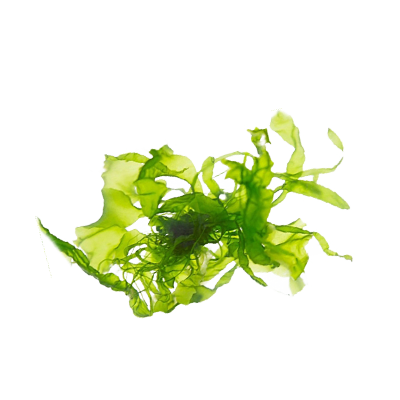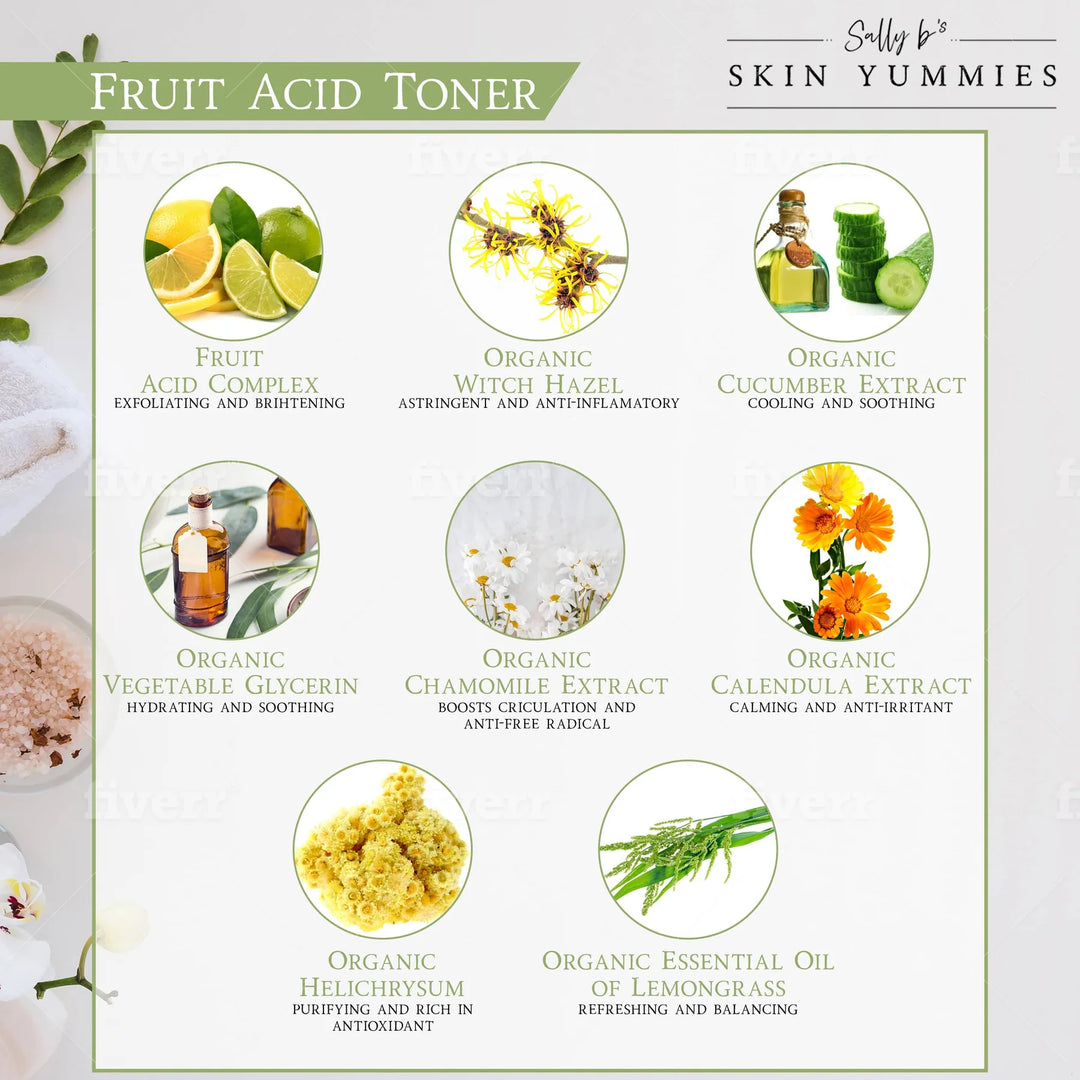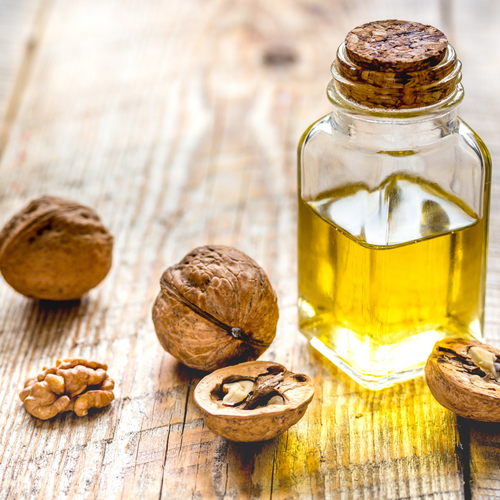How to Create the Perfect All Natural Skin Care Routine
In your quest to find the perfect all-natural skincare routine, it is essential to consider the different aspects of your current daily routine. We recommend a makeup detox, which can be broken down into several different categories of products.
Here's how to get started:
LIP BALM
Chapped and dry lips seem to be on everyone's list of skincare complaints, making lip balm a top-rated product for instant relief. However, we have to be careful which lip balms we are using, as many are not good for our overall health, especially brands that use petroleum jelly.
You might be familiar with the stat that the average woman uses (and subsequently consumes through eating and drinking) somewhere around 7 pounds of lip products in her lifetime. While the jury is still out on the accuracy of this claim, we can attest that lip balm is a product personally on our daily rotation. Many of us reapply it several times a day so you can imagine our surprise when we learned the hero ingredient in most brands is petroleum jelly, a by-product of oil drilling. The European Union has banned petroleum jelly from use in skincare products, and experts are concerned about its link to cancer. Studies have shown that women with breast cancer have twice the levels of hydrocarbons (substances in petroleum jelly) in their breast tissue. But the United States is far from following suit.
While television commercials will have you believe that petroleum jelly is essential to moisturized lips, the truth is that it can only provide short-term relief. It creates a protective barrier over the skin, or in this case lips, that traps in your skin's moisture, but creates an impermeable barrier that prohibits skin from breathing. This makes lips even more chapped.
With so many healthy and effective alternatives available, making the switch to an all-natural skincare routine and a nontoxic, petroleum jelly-free product is easy. Here are a couple of tips to help you soothe your lips without exposing yourself to the dangers of petroleum jelly:
GET MOISTURE-RICH LIPS THE HEALTHY WAY:
- Look for lip balms made without petroleum or other mineral-based ingredients. Instead, look for lip balms with Shea, Cocoa, or Mango Butters or Coconut Oil as they absorb nicely (and safely!) into the skin and naturally improve moisture retention for long-lasting relief.
- Avoid lip balms made with Bnexophenone-3 (a common ingredient in lip balms with sunscreen), as studies have shown it to be a hormone disruptor. The EU has banned it.
- Use lip balms made with organic ingredients whenever possible. After all, you will be absorbing or ingesting some of the ingredients, and if they aren't organic, you could be exposed to chemical pesticide residue.
- Drink lots of water and stay hydrated.
- For parched lips, use a humidifier at night.
- Research your products on the Environmental Working Group's Skin Deep Database to determine if they are healthy enough for your lips.
For everyday kissable lips, the key is consistency. Apply lip balm regularly and not just when lips are dry and cracked. Also, ensure that all lip products you use - not just lip balm - is nontoxic and free of petroleum jelly. Throughout the day, we apply layer over layer of lipstick, gloss, and lip balm, so if one has petroleum jelly, the other products are rendered useless in their ability to moisturize.
ARTIFICIAL FRAGRANCE
It goes without saying that we all want to smell our very best. Walk down the beauty aisle, and you will see a variety of fragrance options for shampoos, lotions, body wash, hand soap, and perfumes. We all have our signature scent, and we admit that before our transition to healthy products, the perfume counter was one of our favorite shopping stops. So when we say how important it is to leave behind artificial fragrance for an all-natural skin care routine, we also know how difficult it is. We do, however, sincerely hope the important health factors will eventually win.
It's telling that dermatology researchers rank fragrance as a top-five allergen. As many as 3,000 chemicals, mostly synthetic, are used to manufacture an artificial fragrance. Use of these chemicals has been seen to cause topical reactions like contact dermatitis or itchy skin rashes for those with sensitive skin. However, if you do not see this skin reaction, you may be blind to what is happening underneath the surface.
By design, a fragrance can enter your body in multiple ways: through absorption or inhalation. Studies have shown that the use of artificial fragrance can exacerbate asthma and cause a range of problems in the immune, reproductive, and nervous systems. Using artificial fragrance not only affects your health, but also the health of those who breathe in your scent (ever been in an elevator with someone heavily perfumed?) and those you cuddle with, like babies who snuggle close to your skin. You are transferring whatever is on your skin directly to theirs.
A few facts:
- It is estimated that 95% of the synthetic fragrances on the market today are derived from petroleum by-products
- More than 2 million Americans have a fragrance allergy or sensitivity
- 1 out of every 3 American children has allergies, asthma, ADHD or autism
- Asthma and allergies affect 1 out of 5 Americans
When it comes to fragrance, there is very little government regulation on what ingredients can be used or what has to be represented on product packaging. Fragrance ingredients are deemed "trade secrets" by the FDA and manufacturers are not required to display the many compounds that make up an artificial fragrance (CLICK HERE for more info on product labeling). This means that any number of chemical fragrance or masking agents could be lurking in your good-smelling products. For example, you will never see the term "phthalates" on your labels, yet they can be used as part of the formulation of a fragrance. It is up to you to take action for your own health and begin self-policing your products for artificial fragrance. Luckily, there are alternatives to keep you smelling good without exposing yourself and others to toxic and potentially hazardous chemicals.
SMELL GOOD THE HEALTHY WAY:
- Avoid synthetic musks, which have been linked to cancer. They bioaccumulate and store themselves within the body and have even been found to be present in breast milk, meaning that nursing infants ingest them.
- Avoid products with phthalates, which have been linked to disruptions in reproductive and endocrine systems. Spot them on ingredient lists by looking for the term "fragrance," ethylene oxide, or Dibutylphthlalate (DBP, DEP, butyl ester).
- Read ALL product ingredient lists. Due to a lack of regulation, products can claim to be "unscented" or "fragrance-free" and still contain artificial ingredients and even artificial fragrance to mask the scent of other ingredients. Navigating ingredient listings can be tricky. As a general rule of thumb, "fragrance" or "parfum" usually means artificial fragrance. Look for products that list out all the plant-derived and essential oils on their packaging. Become familiar with good-for-you ingredients by reading our ingredient glossary.
- Always use products that are free of artificial fragrance or use essential oils or other safe plant botanicals, like Lavender or Neroli, for fragrance. Note: Those with known allergies can also react to plant-based ingredients, so if you are a highly allergic-type, use sparingly at first or even consult with your doctor.
- When in doubt, check out the EWG's Cosmetic Database to research the product you're unsure about. Their database will clue you in as to what ingredients the product uses and its overall toxicity to your health.
Artificial fragrance is not just limited to your makeup bag. Personal care products, scented candles, laundry detergent, and other household cleaners all use fragrance to market their products. Sniff out the products in your home that contain toxic chemicals and make it a point to phase them out. There are many healthy alternatives on the market just waiting to be discovered.
FOUNDATION
Think about your daily beauty routine. After you cleanse, possibly tone, and hopefully moisturize, one of the first products that lands on your face is foundation. That foundation will also become one of the last products you take off at the end of the day. As your foundation is in contact with your skin, its ingredients are slowly being absorbed into your skin and eventually enter your bloodstream. It's been said that women who wear makeup every day will absorb 5 pounds of chemicals from that makeup into their bodies each year (we couldn't believe it either! Check out this LINK).
Knowing this, do you know what ingredients you are exposing yourself to?
If you're not already using a nontoxic makeup, you are more than likely exposing yourself to a toxic soup of ingredients, including Parabens, petroleum products, and formaldehyde producing ingredients. Parabens are an inexpensive and effective preservative used to inhibit bacteria growth and extend the shelf life of a product. Even though they are known to be toxic and potentially cause allergic reactions and skin rashes, they are still widely used in skincare and personal care products. Parabens are considered to be hormone disruptors and have been found to mimic hormones in the body, which can be linked to breast cancer.
A known carcinogen and a petroleum byproduct, mineral oil is also commonly used in makeup and skincare products. According to John Hopkins University, it is the number 2 cause of aging. Mineral Oil dehydrates the skin and slows the rate of cell reproduction, which damages collagen, elastin, and connective tissues. This can lead to pesky fine lines and wrinkles. A scary and telling visual: soak one cracker in a glass of mineral oil and one in a glass of water. You'll notice that the cracker soaking in oil will remain crunchy, while the one in water will become soggy (check out our video demonstration HERE). The same goes for your skin. Mineral oil creates a barrier on your skin just like the cracker, blocking pores and the skin's natural respiration, while, at the same time, trapping dirt and bacteria.
For your health and the appearance of your skin, it is essential that you avoid these toxic chemicals whenever possible.
PUT YOUR BEST FACE FORWARD THE HEALTHY WAY:
- Avoid products that use Parabens. You can spot them on an ingredient label by looking for ingredients with the prefixes Methyl, Propyl, Butyl, and Ethyl. IE Methylparaben
- Avoid products that use dimethyl-dimethyl (DMDM), Diazolidinyl urea, 1.3-diol, and imidazolidinyl urea as they are formaldehyde-releasing agents, meaning they aren't applied as formaldehyde but do become it once on the skin. Formaldehyde is a known carcinogen.
- Avoid products that use Bismuth, which is a byproduct of heavy metal processing. It is a skin irritant, is known to clog pores, and can affect the respiratory system. Learn more about the dangers of Bismuth Oxychloride HERE.
- Be careful with products that use added SPF. Avoid products that use oxybenzone, a hormone-disrupting chemical linked with endocrine disruption and cell damage. We understand how vital SPF is to the health of your skin, so use mineral makeups made with Titanium Dioxide and Zinc Oxide, which are physical blocks to the sun.
- Avoid makeup containing artificial fragrance.
For many, foundation is a must-have product for covering skin imperfections and helping to even out skin tone. Using a chemical-rich product may make your skin look instantly flawless, but its effects are short term. Once you take your makeup off, the same skin woes exist. Our customers have found that using nontoxic makeup not only provides a great look but also improves their skin health, so it looks just as stunning with or without makeup.
EYE SHADOW
When you cut an onion, do your eyes burn and water? Do you avoid getting soap and shampoo in them? There's no denying the sensitivity where our eyes are concerned, so it is surprising that we cover them so heavily in cosmetics. Especially those marketed as "long-lasting" or "waterproof." How can a body cope when these products are so full of chemical agents?
On a typical day, we trace our eyes with eyeliner, add mascara to our lashes, and coat the lids in eye shadow. Now think about how many times a day you rub your eyes. We interact with our eyes so often throughout the day, that our makeup is easily smudged and shifted, which can cause clogged tear ducts, dirty contacts, bacterial infections, and, most commonly, irritated and watery eyes. At the end of the day, we scrub and scrub trying to take the darn stuff off, which can seem like an impossible task. This can result in even more "stuff" getting left behind on our lids and in our eyes.
Most of the traditional eye shadows on the market contain a whole heap of carcinogenic, formaldehyde-releasing, and irritating ingredients. But, careful consideration of product labels can help you avoid these harmful ingredients.
GET EYES THAT POP THE HEALTHY WAY:
- Avoid products containing Talcum Powder (aka Talc). This powdered ingredient can sometimes include a small portion of aluminum silicate and/or be contaminated with asbestos fibers, both of which pose risks for acute or chronic lung irritation or even cancer since it is so easily inhaled. Since the 1970s, Talc particles have been routinely found in the tumors of ovary and lung cancer patients
- Avoid shadows that contain carmine dye by looking for the ingredients: Cochineal, Cochineal Extract, Carmine, Crimson Lake, Natural Red 4, CI 75470, and E120. Carmine is extracted from crushed up cochineal bugs and their eggs.
- Avoid products that use dimethyl-dimethyl (DMDM), Diazolidinyl urea, 1.3-diol, and imidazolidinyl urea as they are formaldehyde-releasing agents, meaning they aren't applied as formaldehyde but do become it once on the skin. Formaldehyde is a known carcinogen.
- Avoid shadows and other eye products that contain parabens and other potentially harmful ingredients. You can spot them on an ingredient label by looking for ingredients with the prefixes Methyl, Propyl, Butyl, and Ethyl. IE Methylparaben.
- Be wary of shimmery eye colors that may contain bismuth oxychloride, which is a byproduct of heavy metal processing. It is a skin irritant, is known to clog pores, and can affect the respiratory system. Learn more about the dangers of Bismuth Oxychloride here.
- Check the expiration dates of your eye makeup products. While eye shadows will say 12 months or more, we suggest starting with a new product after 6. Eye shadow can get easily contaminated with bacteria and fungi, and you don't want to risk an eye infection.
- Never share a brush or wand with anyone, as brushes are bacteria culprits. If you love experimenting and sharing products, keep a stash of clean brushes or cotton swabs on hand.
- Use a non-toxic, non-irritating cleanser that will safely remove all traces of makeup.
Browse Sally B's Skin Yummies pure, non-toxic skincare products, made using only the highest quality organic, natural, and wild-crafted ingredients!






Leave a comment